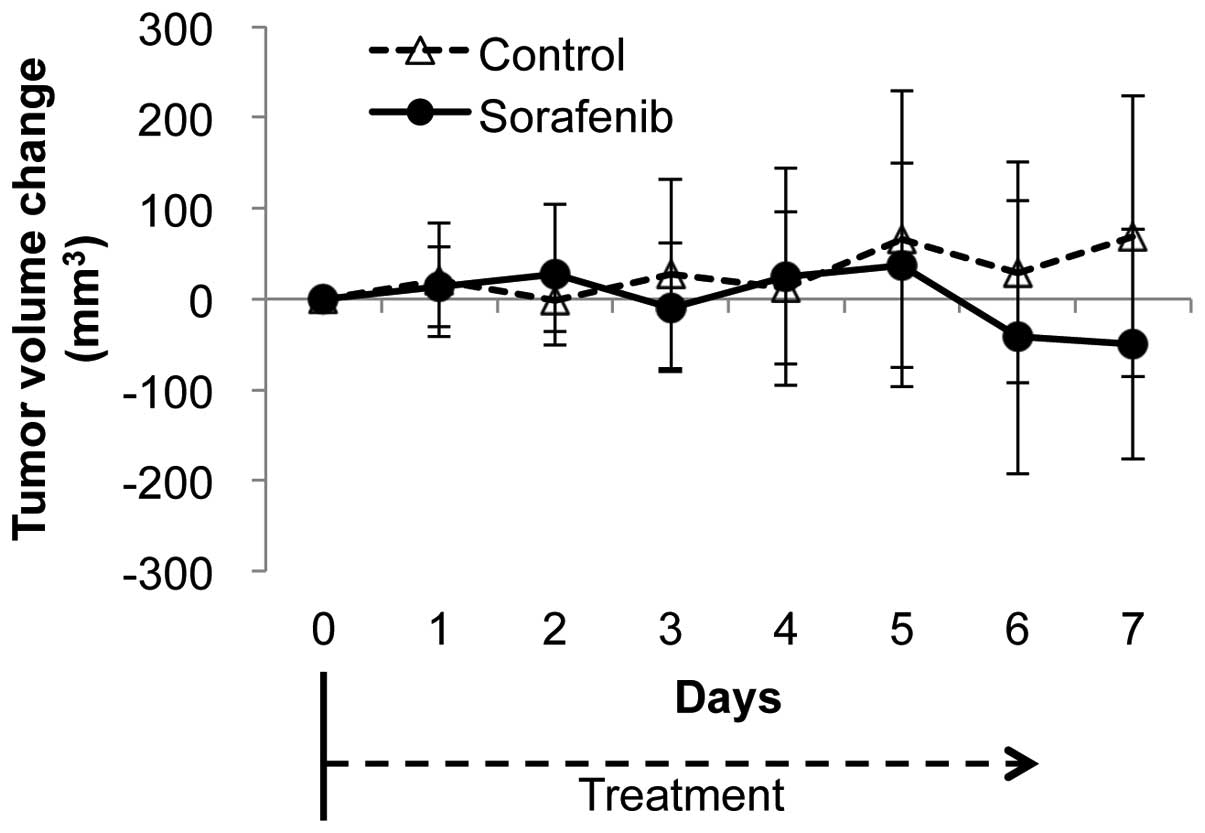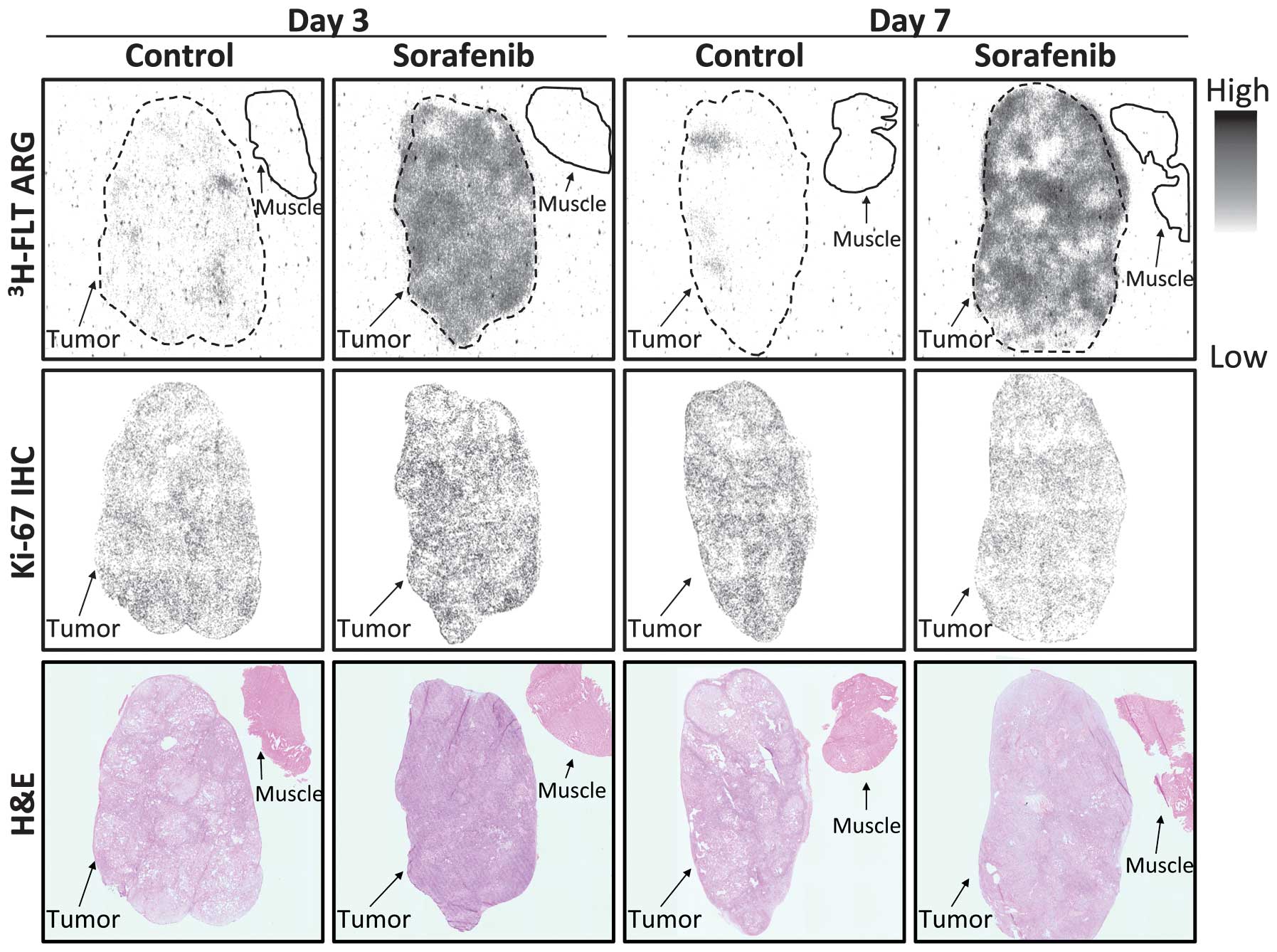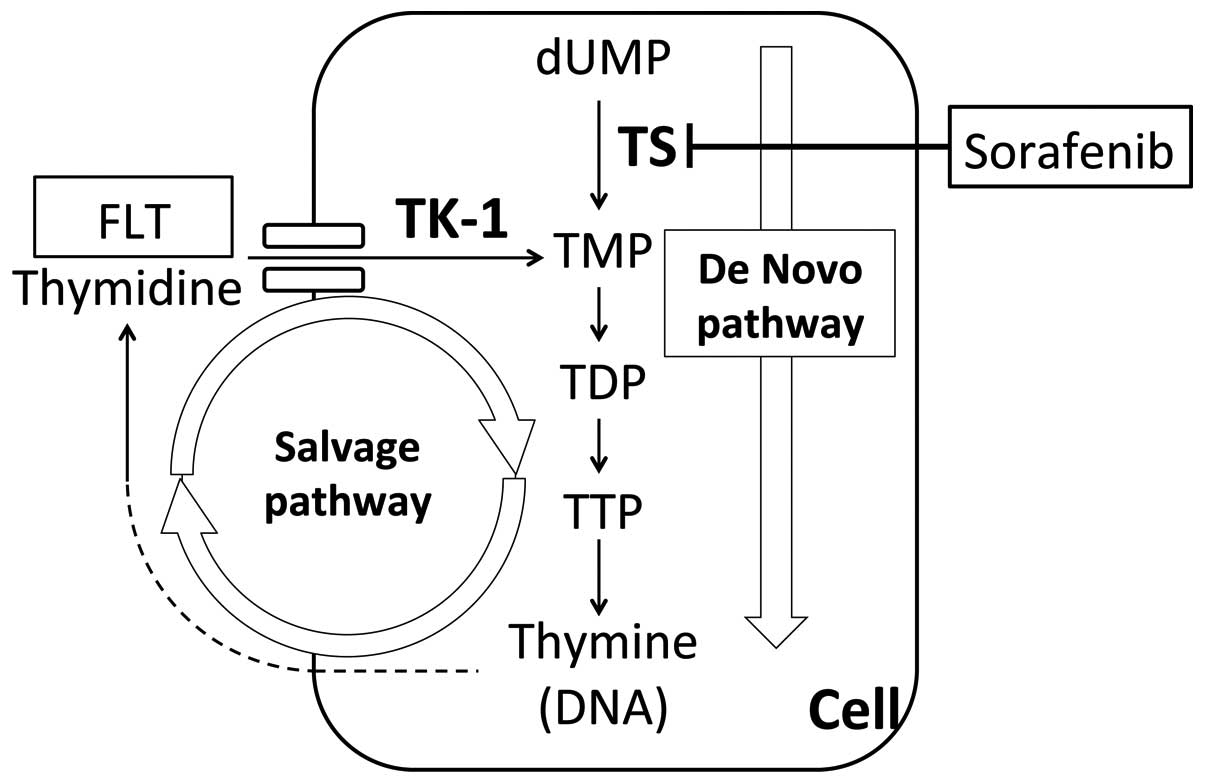|
1
|
Rini BI: Vascular endothelial growth
factor-targeted therapy in renal cell carcinoma: current status and
future directions. Clin Cancer Res. 13:1098–1106. 2007. View Article : Google Scholar : PubMed/NCBI
|
|
2
|
Cáceres W and Cruz-Chacón A: Renal cell
carcinoma: molecularly targeted therapy. PR Health Sci J. 30:73–77.
2011.PubMed/NCBI
|
|
3
|
Chang YS, Adnane J, Trail PA, et al:
Sorafenib (BAY 43–9006) inhibits tumor growth and vascularization
and induces tumor apoptosis and hypoxia in RCC xenograft models.
Cancer Chemother Pharmacol. 59:561–574. 2007.
|
|
4
|
Escudier B, Eisen T, Stadler WM, et al;
TARGET Study Group. Sorafenib in advanced clear-cell renal-cell
carcinoma. N Engl J Med. 356:125–134. 2007. View Article : Google Scholar : PubMed/NCBI
|
|
5
|
Elias JM: Cell proliferation indexes: a
biomarker in solid tumors. Biotech Histochem. 72:78–85. 1997.
View Article : Google Scholar : PubMed/NCBI
|
|
6
|
Gerdes J: Ki-67 and other proliferation
markers useful for immunohistological diagnostic and prognostic
evaluations in human malignancies. Semin Cancer Biol. 1:199–206.
1990.
|
|
7
|
Scholzen T and Gerdes J: The Ki-67
protein: from the known and the unknown. J Cell Physiol.
182:311–322. 2000. View Article : Google Scholar : PubMed/NCBI
|
|
8
|
Shields AF, Grierson JR, Dohmen BM, et al:
Imaging proliferation in vivo with [F-18]FLT and positron emission
tomography. Nat Med. 4:1334–1336. 1998.
|
|
9
|
Toyohara J, Waki A, Takamatsu S, Yonekura
Y, Magata Y and Fujibayashi Y: Basis of FLT as a cell proliferation
marker: comparative uptake studies with [3H]thymidine and
[3H]arabinothymidine, and cell-analysis in 22 asynchronously
growing tumor cell lines. Nucl Med Biol. 29:281–287.
2002.PubMed/NCBI
|
|
10
|
Apisarnthanarax S, Alauddin MM, Mourtada
F, et al: Early detection of chemoradioresponse in esophageal
carcinoma by 3′-deoxy-3′-3H-fluorothymidine using preclinical tumor
models. Clin Cancer Res. 12:4590–4597. 2006.PubMed/NCBI
|
|
11
|
Chao KS: Functional imaging for early
prediction of response to chemoradiotherapy:
3′-deoxy-3′-18F-fluorothymidine positron emission tomography - a
clinical application model of esophageal cancer. Semin Oncol. 33(6
Suppl 11): S59–S63. 2006.PubMed/NCBI
|
|
12
|
Chao KS: 3′-deoxy-3′-(18)F-fluorothymidine
(FLT) positron emission tomography for early prediction of response
to chemoradiotherapy - a clinical application model of esophageal
cancer. Semin Oncol. 34(2 Suppl 1): S31–S36. 2007.
|
|
13
|
Leyton J, Latigo JR, Perumal M, Dhaliwal
H, He Q and Aboagye EO: Early detection of tumor response to
chemotherapy by 3′-deoxy-3′-[18F]fluorothymidine positron emission
tomography: the effect of cisplatin on a fibrosarcoma tumor model
in vivo. Cancer Res. 65:4202–4210. 2005.
|
|
14
|
Ullrich RT, Zander T, Neumaier B, et al:
Early detection of erlotinib treatment response in NSCLC by
3′-deoxy-3′-[F]-fluoro-L-thymidine ([F]FLT) positron emission
tomography (PET). PLoS One. 3:e39082008.
|
|
15
|
Kenny L, Coombes RC, Vigushin DM,
Al-Nahhas A, Shousha S and Aboagye EO: Imaging early changes in
proliferation at 1 week post chemotherapy: a pilot study in breast
cancer patients with 3′-deoxy-3′-[18F]fluorothymidine positron
emission tomography. Eur J Nucl Med Mol Imaging. 34:1339–1347.
2007.PubMed/NCBI
|
|
16
|
Zhao S, Kuge Y, Mochizuki T, et al:
Biologic correlates of intratumoral heterogeneity in 18F-FDG
distribution with regional expression of glucose transporters and
hexokinase-II in experimental tumor. J Nucl Med. 46:675–682.
2005.PubMed/NCBI
|
|
17
|
Wilhelm SM, Carter C, Tang L, et al: BAY
43–9006 exhibits broad spectrum oral antitumor activity and targets
the RAF/MEK/ERK pathway and receptor tyrosine kinases involved in
tumor progression and angiogenesis. Cancer Res. 64:7099–7109.
2004.
|
|
18
|
Buck AK, Herrmann K, Shen C, Dechow T,
Schwaiger M and Wester HJ: Molecular imaging of proliferation in
vivo: positron emission tomography with [18F]fluorothymidine.
Methods. 48:205–215. 2009.
|
|
19
|
Barwick T, Bencherif B, Mountz JM and
Avril N: Molecular PET and PET/CT imaging of tumour cell
proliferation using F-18 fluoro-L-thymidine: a comprehensive
evaluation. Nucl Med Commun. 30:908–917. 2009. View Article : Google Scholar : PubMed/NCBI
|
|
20
|
Liu G, Jeraj R, Vanderhoek M, et al:
Pharmacodynamic study using FLT PET/CT in patients with renal cell
cancer and other solid malignancies treated with sunitinib malate.
Clin Cancer Res. 17:7634–7644. 2011. View Article : Google Scholar : PubMed/NCBI
|
|
21
|
Zhang CC, Yan Z, Li W, et al:
[(18)F]FLT-PET imaging does not always ‘light up’ proliferating
tumor cells. Clin Cancer Res. 18:1303–1312. 2012.
|
|
22
|
Chalkidou A, Landau DB, Odell EW,
Cornelius VR, O’Doherty MJ and Marsden PK: Correlation between
Ki-67 immunohistochemistry and 18F-Fluorothymidine uptake in
patients with cancer: A systematic review and meta-analysis. Eur J
Cancer. 48:3499–3513. 2012. View Article : Google Scholar : PubMed/NCBI
|
|
23
|
Lee SJ, Kim SY, Chung JH, et al: Induction
of thymidine kinase 1 after 5-fluorouracil as a mechanism for
3′-deoxy-3′-[18F]fluorothymidine flare. Biochem Pharmacol.
80:1528–1536. 2010.PubMed/NCBI
|
|
24
|
Plotnik DA, McLaughlin LJ, Krohn KA and
Schwartz JL: The effects of 5-fluoruracil treatment on
3′-fluoro-3′-deoxythymidine (FLT) transport and metabolism in
proliferating and non-proliferating cultures of human tumor cells.
Nucl Med Biol. 39:970–976. 2012.
|
|
25
|
Wilson PM, LaBonte MJ, Lenz HJ, Mack PC
and Ladner RD: Inhibition of dUTPase induces synthetic lethality
with thymidylate synthase-targeted therapies in non-small cell lung
cancer. Mol Cancer Ther. 11:616–628. 2012. View Article : Google Scholar : PubMed/NCBI
|
|
26
|
Takeuchi A, Shiota M, Tatsugami K, et al:
Sorafenib augments cytotoxic effect of S-1 in vitro and in vivo
through TS suppression. Cancer Chemother Pharmacol. 68:1557–1564.
2011. View Article : Google Scholar : PubMed/NCBI
|



















